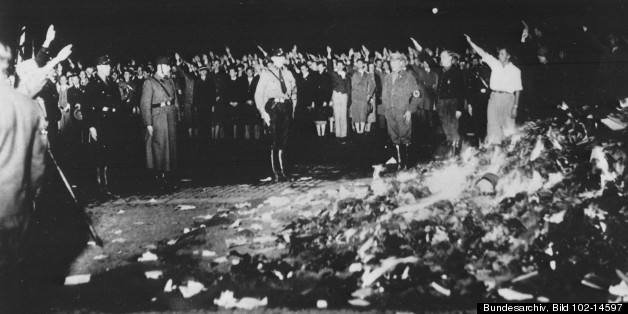
I originally wrote this blog in 2017 but recent accelerating events necessitate a substantial update and revision. A savage monster devouring all historical memory has been unleashed and will not be satiated. It won’t stop with images/statutes of Robert E. Lee or other Confederates. It will soon turn to devouring all of the Founding Fathers generation, first focusing upon Jefferson and Washington. Their DC monuments and memorials will have to come down. All connections of Jefferson to the University of Virginia (which he founded ) will have to be erased. They will be taken off currency and replaced. Washington, DC will be renamed. The willfully ignorant ravenous beast will not be satiated until every vestige or trace of the history of traditional America has been purged and cleansed. I predicted this years ago as have others such as the eminent historian Brion McClanahan. Unless definitive national debate emerges or civil conflict erupts, there will be no drawing of the line. But the eradication will not stop with only focusing upon the hated South and its distinctive culture. That is a fanciful delusion. It will quickly move above the Mason-Dixon Line and have other targets in sight.
As this illuminating article points out, “New York, both the city and the state, is named after the house of York and particularly for James Stuart, then Duke of York, one of the most successful slavers in colonial American history.” Additionally, the most famous and widely used Protestant translation of the Holy Bible is the King James version, named for James I, the grand-father of this notorious slave trader. And who was father of the “traitor” King Charles I (executed by Oliver Cromwell and the British Parliament).
The Start of English Slave Trade
As early as 1618, King James I had granted a patent to a company that wanted to trade for gold and precious woods in Africa. Other groups also received rights to trade in Africa, but never dealt with slaves in any major way. English involvement in the slave trade would intensify after 1663, when a new patent was issued to the Company of Royal Adventurers. England had realized the money to be made trading slaves to the West Indies and Virginia. By 1668, over a quarter of the new company’s profits was derived from the slave trade.
Africans in Virginia’s Early Years
The first documented arrival of Africans to Virginia was in 1619, when an English warship, White Lion, arrived at Point Comfort in present-day Hampton. The African captives had been forcibly removed from a Portuguese slave ship subsequent to being attacked by the White Lion and another English warship, Treasurer, while sailing in the Bay of Campeche. The White Lion’s English captain, John Jope, carried letters of marque from the Dutch Prince Maurice making it legal for his ship to sail as a privateer and attack any Spanish or Portuguese ships it encountered. The “20 and odd” Africans on the White Lion were traded to colony officials for food. These Africans were much-needed workers to cultivate tobacco, the new cash crop of Virginia. The institution of slavery slowly crept into Virginia legislation. By 1660, slavery as we think of it today was established in Virginia. Tobacco was extremely labor-intensive, and more and more workers were needed. The sale of Africans to Virginia planters promised to be a profitable endeavor.
Will anti-Christian progressives now follow in their satanic National Socialist predecessors’ footsteps and call for the burning of millions of copies of this infamous text which bears the name of its racist proponent of slavery?
As the Duke of York and brother of King Charles II:
James Stuart conquered the settlements between the Delaware and the Connecticut rivers from the Dutch in 1664, and the name of the principal port, New Amsterdam, was promptly changed to honor the new master. James’ brother, King Charles II of England, gave the territory to the duke in exchange for four beaver pelts annually.
The Duke of York, who later became King James II of England (and James VII of Scotland), created Britain’s greatest slave empire known as the Royal African Company, which transported between 90,000 and 100,000 African slaves to the Caribbean and American colonies between 1672 and 1689.
King Charles II established the Royal Adventurers company in 1664, which traded in Africa, and put his younger brother James in charge of the operation. When the company went into debt, James and the crown dissolved it and reformed it into the Royal African Company to focus on the continent full of ivory, gold, and the “single most lucrative commodity,” slaves, Hilary McDonald Beckles, now the vice-chancellor of University of the West Indies, wrote in a 1999 paper for UNESCO.
The Royal African Company, governed by the brother of the king, enjoyed almost regal power to compete with the Dutch for dominion over Africa’s resources and people.
The company established ports along Africa’s Gold Coast, and “soon became the largest single company involved in the slave trade,” Beckles wrote. “Between 1680 and 1700 it supplied some 30,000 Africans to the Caribbean.”
“Slaves purchased for the Royal African Company of England were branded ‘DY,’ Duke of York, after the president of the company,” Beckles wrote.
The troublesome namesake of New York did not doom the colony to be marked forever as pro-slave. New York State passed a law to gradually emancipate slaves in 1799, following successful abolitionist movements in Pennsylvania, Massachusetts, Connecticut and Rhode Island, which outlawed slavery in the decades after the revolution.
But none of this will matter when the insatiable beast is on its destructive march.
3:48 pm on June 14, 2020


